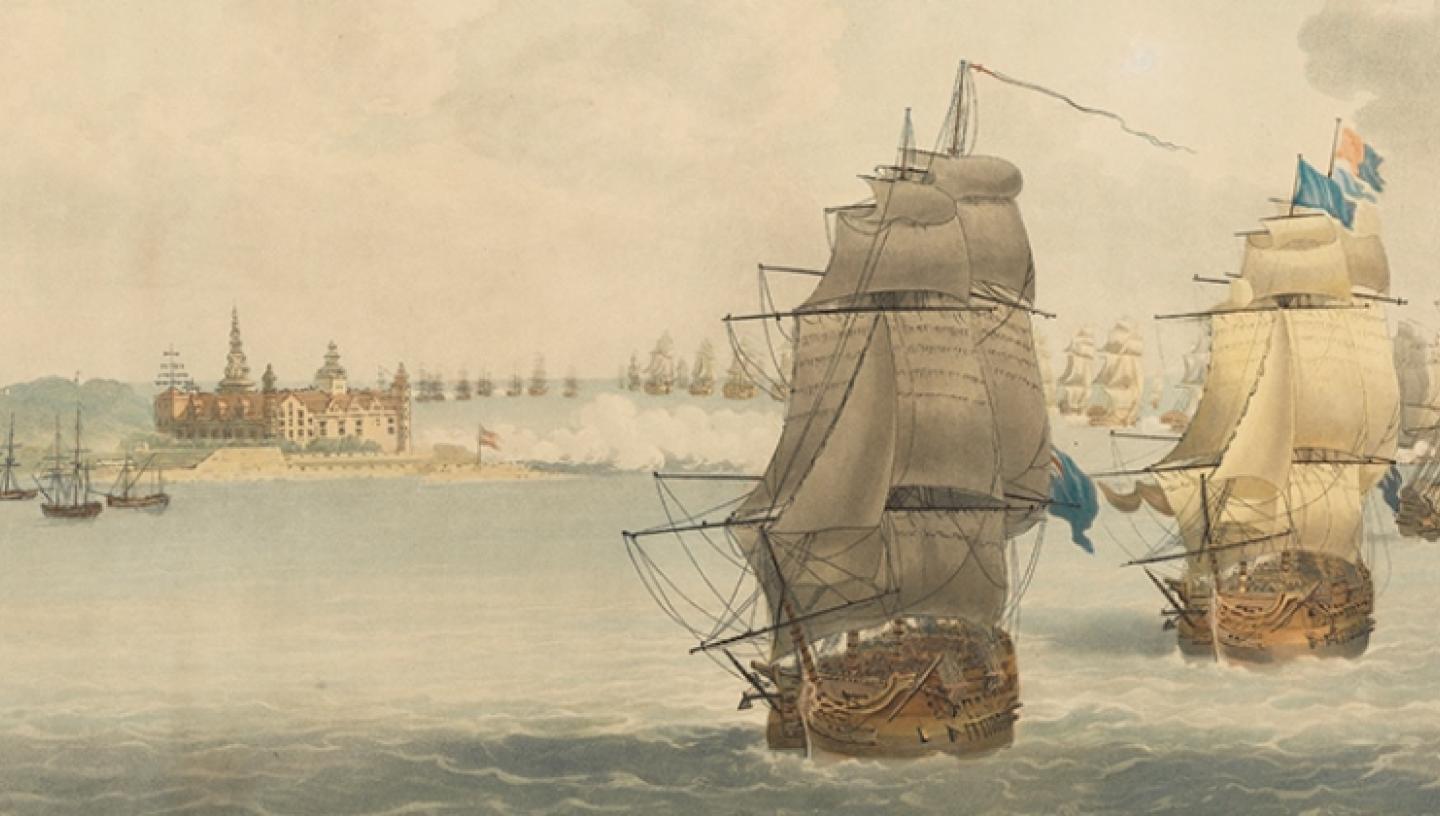
Essential Information
| Location |
National Maritime Museum
|
|---|---|
26 Jan 2017
Systematically working on the Museum’s collection of ship portraits is a great way to see how the same naval actions have been depicted by different artists, at different times and in different ways.
The images produced in the wake of one particular incident in the French Revolutionary Wars demonstrate beautifully how artistic responses can range from the descriptive and matter-of-fact approaches of the naïve eyewitness, to the poised and refined output of a leading professional, which in turn was referenced by a populist with his own brand of imagination and drama.
In 1801, the Royal Navy stood poised to attack the Danish fleet at Copenhagen. Act early enough, and the Danes could be caught before support arrived from her Swedish and Russian allies. To get to Copenhagen, the British would have to sail through the 4000m wide strait between Denmark and Sweden. Unfortunately for the British, the Danish side of the strait was policed by Kronborg Castle – one of Europe’s mightiest fortresses. Somehow, the British had to slip through unscathed. On 30 March 1801 they weighed anchor and set sail, with Vice Admiral Lord Nelson leading the charge.
As they sailed close to the more weakly defended Swedish side of the strait, the guns of Kronborg opened up with savage blasts, which the British ships reciprocated. The air was thick with smoke, and thundered with the cacophony of cannon fire. Yet all the shots fell far short of their targets, and for whatever reason, the Swedish batteries declined to join the fight. The Royal Navy had passed the first major obstacle between them and the Danish fleet.
This was all captured in an eye-witness sketch by Robinson Kittoe, who served as secretary to Rear Admiral Thomas Graves, Nelson’s second in command. With its truthfulness to topography and careful annotations, Kittoe’s drawing is a faithful reproduction of the events of the day. The width of the strait is apparent, together with the distance between the British ships and Kronberg Castle. Fine details like the castle’s telegraph tower are carefully noted. The drawing lacks nothing in detail, but it remains a sketch in simplistic style.
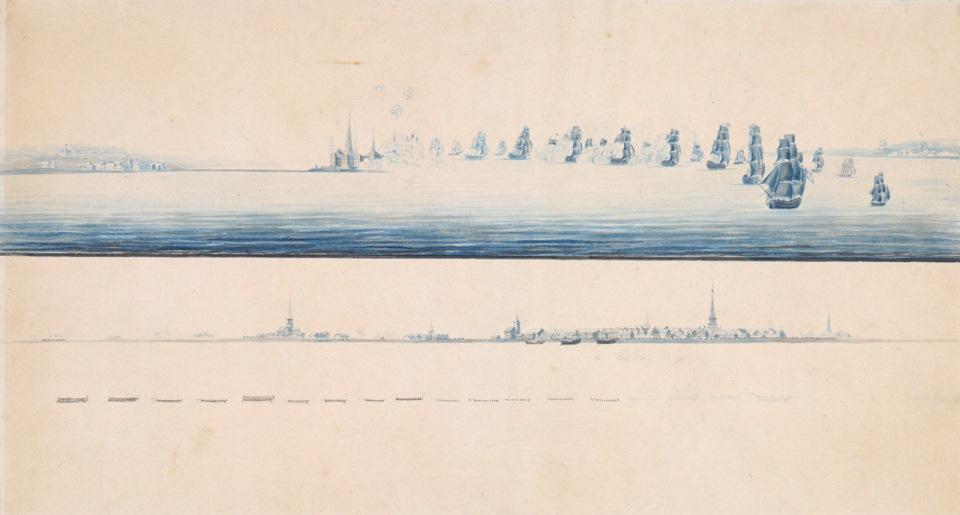
Enter Nicholas Pocock, one of the leading maritime painters of the late 18th and early 19th centuries. Pocock was well known for producing images that were true to life, having spent much of his life at sea, and experiencing naval combat at first hand. Pocock was a successful and prolific artist, the favourite of admirals, and one time Marine Painter to George III. When Pocock painted things which he had not seen for himself, he relied heavily on accounts and drawings made on the spot by eyewitnesses.
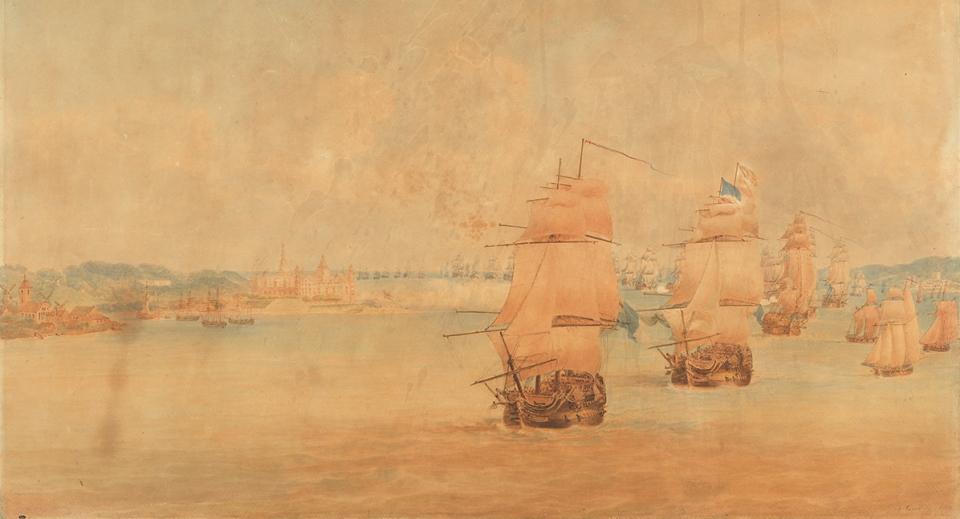
Pocock’s watercolour of January 1802 showing the British fleet passing Kronborg, bears many similarities to Kittoe’s sketch, on which it was directly based (by permission). An aquatint by Pocock was published a few months later, clearly been made from his original watercolour. The ships are shown closer-to, and the viewpoint has shifted down from that of the Kittoe sketch, so as to put the observer closer to the action. Although the width of the strait has narrowed from the Kittoe sketch, the British are still shown to be closer to the Swedish shore than the Danish. Pocock has applied artistic licence sparingly, to make an image that would be believable yet aesthetic – and just dramatic enough to satisfy the demand for the drama that the commercial world demanded of him.
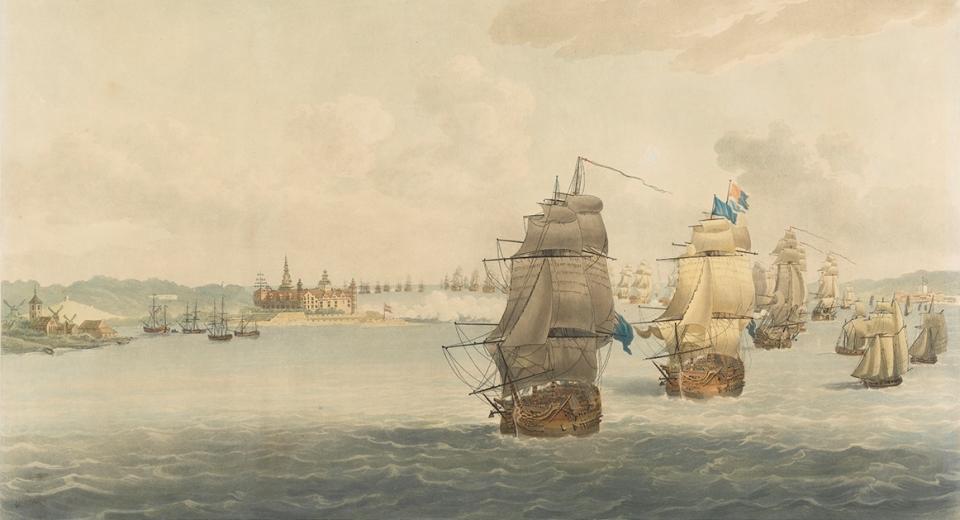
In stark contrast to Pocock’s aquatint is that made by Robert Dodd. Although undated, it seems a fair assumption to suppose that Dodd’s image is largely derived from Pocock’s. Dodd, like Pocock, takes the viewer’s eye-level down – but does not stop until we are almost right underneath the bow of the leading ship. The strait too is narrowed, but to such an extent that the British are mere ships-lengths away from the Danish guns – and all is smoke and action. While Dodd’s work lacks the accuracy and finesse of Pocock, he has produced an image that is most definitely pure action.
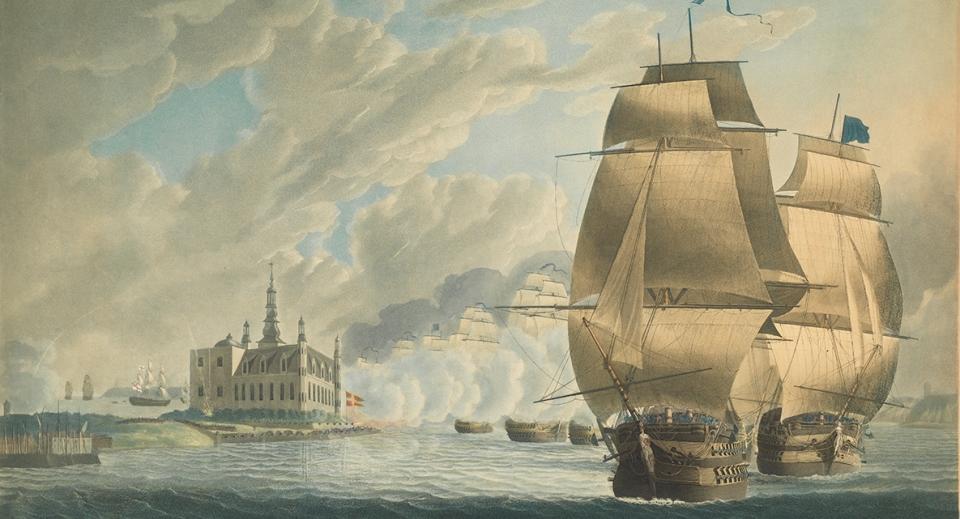
Perhaps this is explained by the differences between the markets to whom Dodd and Pocock appealed. Dodd was also a successful and prolific artist. Like Pocock, his work frequently appeared in the Royal Academy. Unlike Pocock, Dodd never held any high offices. Pocock painted for the King; one of Dodd’s most celebrated works, a depiction of the Glorious First of June, was painted for his local boozer – the Half-Way House tavern in Whitechapel. Dodd’s more populist approach results in work which emphasis spectacle over refinement and faithfulness. Early 19th-century print culture was a world which our media today still seems to echo.
Tom Hopkins, Ship Portrait Volunteer